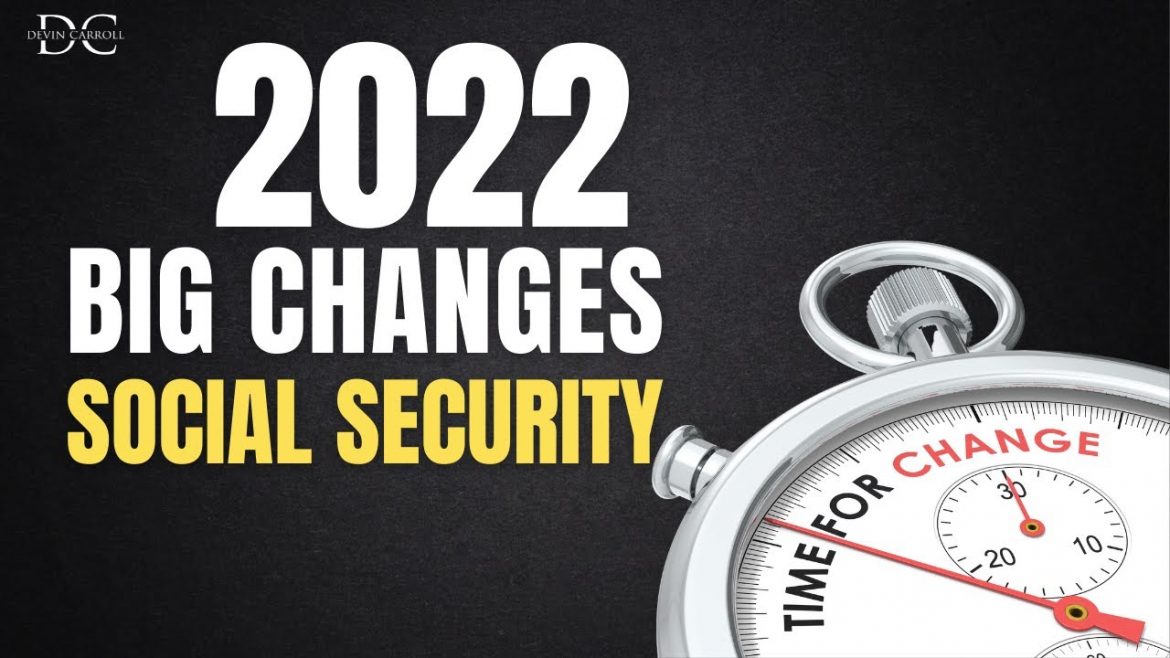Government-backed retirement Changes to Know About in 2022
The thing that’s coming down the road for Social Security in 2022? Here are the five greatest changes you really want to be familiar with in the new year.
The 5.9% COLA is the greatest starting around 1982.
Likely the most discussed change to Social Security benefits is the 5.9% cost for most everyday items change (COLA). That is the biggest Social Security raise starting around 1982. Throughout the last 10 years, COLAs have arrived at the midpoint of around 1.65%. The higher-than-normal change is the consequence of taking off expansion, as estimated by the U.S. Branch of Labor’s Consumer Price Index (CPI-W).
Beneficiaries will see that additional cash in their actually looks starting in January. This is the way the COLA will separate for the typical beneficiary:
The typical resigned laborer will get an extra $92 per month.
The typical handicapped laborer will get an extra $76 per month.
The most extreme Supplemental Security Income (SSI) benefit for people will increment by $47 every month.
Government health care expenses are additionally going up.
The 5.9% raise for Social Security beneficiaries appears to be somewhat less liberal when you consider that Medicare charges are ascending too. Federal medical insurance Part B month-to-month charges will spike by $21.60 in 2022, the biggest expansion in the program’s set of experiences. Since Part B expenses are naturally deducted from Social Security benefits, beneficiaries who get Medicare won’t see their checks increment by the full 5.9%.
The higher charges aren’t the main expense increment Medicare beneficiaries will confront. Both Part An and Part B deductibles are likewise going up.
The full retirement age is currently 67.
Assuming that you’re praising your 62nd birthday in 2022, your full retirement age is presently 67. Full retirement age is the point at which you’re qualified for your full Social Security benefit, which is known as your essential protection sum. However you can begin benefits at age 62, and your checks will be lower than if you paused.
Full retirement age began step by step expanding in two-month increases from 65 to 67 every 2000, in light of your extended period of birth. For instance, somebody brought into the world in 1937 or prior had a full retirement age of 65, while somebody brought into the world in 1938 had a full retirement age of 65 and two months. Those brought into the world somewhere in the range of 1943 and 1959 had a full retirement age somewhere in the range of 66 and 66 and 10 months. In any case, anybody brought into the world in 1960 or later needs to hold on until age 67 to accept their full advantage.
You’ll have to procure somewhat more to get Social Security credits.
In 2022, you’ll have to acquire $1,510 for every Social Security credit. That is up marginally from 2021 when the base was $1,470.
To fit the bill for Social Security benefits, you really want somewhere around 40 work credits. You can procure four credits in no less than a year, so fitting the bill for benefits expects no less than 10 years of work. However long you procure $6,040 in 2022, you’ll get the limit of four credits for the year.
Government-managed retirement will burden up to $147K of wages.
On the off chance that you’re a six-figure worker, Social Security expenses might gobble up a somewhat higher part of your check this year. The cap on available Social Security wages will increment to $147,000 in 2022, up from $142,800 in 2021. Basically, the first $147,000 of your income is dependent upon the 6.2% Social Security charge. Anything you acquire above $147,000 is excluded.
However, the expansion in this cap isn’t something a great many people need to stress over. Just around 6% of laborers acquire more than the greatest available pay at whatever year.


